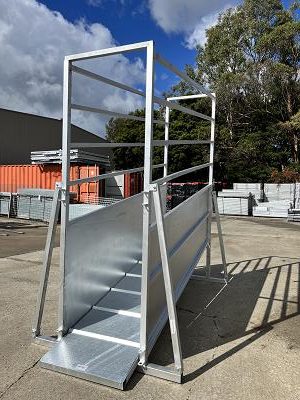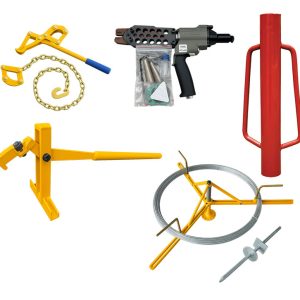Description
Why a Quality Stock Loading Ramp Is Essential on Australian Farms and Stations
A well-constructed stock loading ramp is one of the most important assets on any Australian cattle or sheep property. Whether you’re loading animals for transport, sale, or simply moving them between paddocks, the loading ramp is where safety, efficiency, and animal handling converge. A poorly designed or rust-prone ramp can slow down operations, cause stress to livestock, and increase the risk of injury—for both animals and handlers.
On busy working properties, a durable and properly designed stock ramp is not a luxury—it’s a necessity.
Purpose-Built for Australian Livestock Handling
Loading livestock is a high-pressure moment. Animals are often nervous, unpredictable, and sensitive to their surroundings. That’s why a stock ramp must be specifically engineered to handle the weight, movement, and force of large animals—especially when cattle or sheep hesitate, baulk, or surge forward.
A high-quality loading ramp is built with non-slip flooring to reduce falls, secure side rails to guide animals safely, and a reinforced base that won’t shift or buckle under pressure. These design elements aren’t optional—they’re essential for safe and stress-free stock handling.
Using makeshift ramps or retrofitted trailers not only slows down operations but increases the likelihood of escape, injury, and damage to vehicles or infrastructure. A professionally built ramp ensures smoother animal flow, reduces stress, and keeps both workers and livestock safer during loading.
Hot-Dipped Galvanised Ramps Last Longer and Perform Better
Australian farms and stations deal with some of the harshest environmental conditions in the world—intense UV radiation, heavy rain, corrosive dust, manure build-up, and temperature extremes. These elements can quickly wear down untreated or poorly coated metal, especially at critical points like welds, flooring, and rail joints.
That’s why hot-dipped galvanised stock loading ramps are the industry standard for durability. The hot-dip galvanising process involves immersing the entire structure in molten zinc, coating every surface—inside and out. This forms a thick, bonded protective layer that prevents rust and corrosion, even in coastal or high-moisture environments.
Unlike spray-painted or light zinc coatings, hot-dipped galvanising penetrates hard-to-reach areas and withstands repeated wear from hooves, mud, and exposure. It reduces maintenance needs, extends the ramp’s working life, and provides long-term value for your investment. For farms looking to minimise downtime and infrastructure replacement costs, galvanised ramps are the smart choice.
The Benefits of Adjustable Height in Modern Stock Ramps
One of the most practical features of today’s professional stock ramps is adjustable height functionality. This allows the ramp to align perfectly with various truck and trailer decks, ensuring a consistent gradient for animals to walk up and down.
An adjustable-height ramp offers several key advantages. First, it enhances animal welfare by maintaining a comfortable walking angle, reducing stress and preventing injuries. Second, it adds versatility by enabling the same ramp to service a wide range of vehicles—from low-profile gooseneck trailers to high-deck semis—without the need for risky makeshift solutions.
Lastly, adjustable ramps improve operational efficiency. Instead of wasting time adjusting loading setups with blocks or rework, handlers can make fast, precise adjustments—saving valuable minutes during tight schedules or contractor pickups.
This feature is particularly beneficial for mixed-use yards, commercial livestock operations, and properties that work with various carriers and transport configurations.
Choose the Right Ramp for Long-Term Farm Performance
On Australian farms and stations, every piece of infrastructure needs to work hard—and last. A hot-dipped galvanised, purpose-built stock loading ramp with adjustable height isn’t just a piece of equipment—it’s a critical investment in safety, productivity, and animal welfare.
Whether you’re upgrading an old ramp or building new yards from scratch, choosing a ramp designed for the job will improve loading flow, reduce risks, and support the long-term success of your operation.





